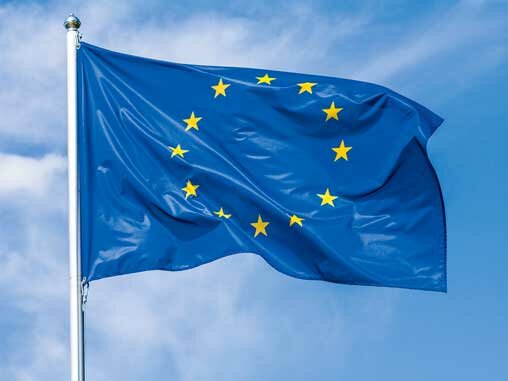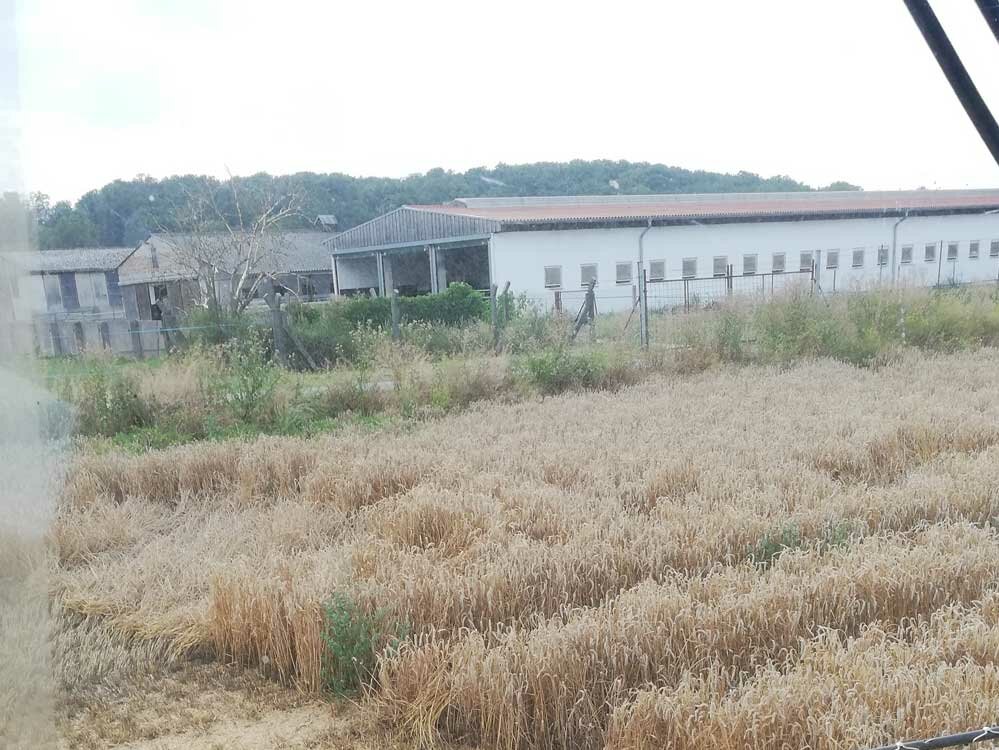EU Eastward Expansion: 20 years in fast motion
By Thomas Künzel, DLG Mitteilungen
Ludwig van Beethoven would probably have found it hard to believe: The European anthem rang out in all 15 old and ten new EU member states on the night of May 1, 2004.
It was a historic step: with the accession of the Baltic states and former Soviet republics of Estonia, Latvia and Lithuania, as well as Poland, the Czech Republic, Slovakia, Hungary, the former Yugoslavian republic of Slovenia and the two Mediterranean states of Malta and Cyprus, an economic area with a total of 470 million inhabitants was created. Around half of the 75 million new EU citizens lived in Poland. With the eastward enlargement, the division of Europe - some 15 years after the fall of the Iron Curtain - was considered to have been overcome.
The two candidate countries Romania and Bulgaria followed in 2007. On July 1, 2013, Croatia became the 28th member state to join the European Union - and on January 31, 2020, the United Kingdom left the EU.
EU enlargement to the east - a historic event
The EU's eastward enlargement is a historic success story - economically, politically and in terms of consolidating Europe's importance as a leading region in world trade. The World Bank also acknowledges this by describing Europe as an "integration machine". Never before in history has the fundamental transformation of an economic system worked so quickly, in this case from a planned economy to a market economy.
There were reservations before the new members joined. The economic gap between the accession countries and the existing member states was too great. The wage gap was also repeatedly cited as an argument against the enlargement round. Many feared that the influx of workers from the new member states could lead to low wages and higher unemployment. The debate was particularly controversial in Germany: Immediately before the accession round, less than a third of Germans were in favor of enlargement in the Eurobarometer - in no other old EU member state were approval rates so low.
Accession to the EU: transitional rules
The price for the big enlargement round was a series of transitional regulations. For example, the old EU states were given the right to close their labor markets to citizens from the new member states for up to seven years. Agricultural subsidies were also only paid in full years later.
The reason for this is the transitional arrangement for agricultural income support negotiated at the EU summit in Copenhagen in December 2002. After accession, Eastern European farmers initially had to make do with 25% of what their counterparts in France and Germany received. Full "equal treatment" between West and East will only be achieved in 2013 for these subsidies, which account for around two thirds of the agricultural budget.
On the other hand, farmers in the new member states benefited from EU mechanisms to support agricultural markets immediately after accession: high tariffs, export subsidies and state purchase guarantees caused prices for some agricultural products, especially dairy products and beef, to soar. The EU produces a third more grain than before and a quarter more milk and meat after enlargement. Arable land increased by 45% and the market, with 470 million inhabitants, is one of the largest and most absorbent.
The EU monetary union
The euro has been around for over 20 years, but many EU member states have still not introduced it. These include Sweden, Poland, the Czech Republic, Romania, Hungary and Bulgaria. This means that the euro is currently the national currency in 19 member states. The economic requirements for joining the euro include low inflation and annual new debt amounting to no more than 3% of GDP.
In principle, all EU states (with the exception of Denmark) have committed to joining the monetary union as soon as they meet the convergence criteria. However, some Central and Eastern European countries currently have reservations about adopting the euro. Poland, for example, the largest EU member state that still uses a national currency, is unlikely to join the eurozone under the current government.
The Polish success story
At the time, Poland was considered the worst-prepared candidate of the ten countries that joined the EU in 2004. The reforms demanded by Brussels in advance had only been partially implemented. And the country was rife with corruption scandals involving key party officials. The fact that Poland was allowed to join the EU at all had less economic than political reasons. Western politicians did not want to leave out the largest of the Eastern European accession candidates. Without Poland, EU enlargement made no political sense, many felt.
At the same time, there were great fears in Poland about the new alliance. There was concern that after accession, Western investors would dominate all sectors of the economy, "buy up" the country and ultimately lead it to bankruptcy. Many farmers, who play the biggest role in the largest accession state, were also afraid: Almost 20 % of the workforce there still earn most of their money in agriculture. They were worried about whether their products would be competitive after enlargement.
None of the nightmare scenarios came true. According to a survey by the Polish state institute CBOS, over 60% of Poles now believe that joining the EU has been of great benefit to the country. Farmers are the most satisfied, as they have also benefited the most from EU subsidies. Three quarters of them speak positively about the EU.
In economic terms, EU accession was definitely a success: the Polish economy grew by 49% (in terms of GDP). Unemployment, once at 20%, has halved. Only a few years after EU enlargement, it also became clear that well-educated young Poles can also lead a successful life in their own country.
Structural change in agriculture
At the beginning of the 2000s, many Polish farmers were still smallholders, producing mainly for their own needs and only secondarily for the market. These farms have no future - with or without EU enlargement. It was foreseeable that hundreds of thousands of them would give up and enter the labor markets. The structural change that has seen the number of farms in Western Europe continually shrink was still to come in Poland, but also in the Baltic republics and Slovenia.
Farmers in some other accession countries have already felt the effects of the law of "grow or die". In the Czech Republic, Hungary and Slovakia, for example, the share of employment in agriculture was only 5 to 6% at the time of accession. The average for the old Community of Fifteen is 4%, in Germany 2.5%. The "additional income" from EU subsidies has delayed structural change in Eastern Europe somewhat, but has certainly not been able to stop it. At the same time, EU membership has further intensified competition on the markets. With the exception of Hungary, all applicant countries were already importing more food from the EU than they were selling there.
EU payments for agriculture
For years, the governments of the ten candidate countries fought for EU subsidies and raised high expectations. For months, the haggling over subsidies, area premiums and milk quotas dominated the accession negotiations. The result disappointed many farmers in Eastern Europe, probably also because the demands were so high. They felt like second-class farmers because the agricultural subsidies were initially less generous for them than in Western Europe.
Looking at the current EU budget, just under €243 billion has been budgeted for subsidies, with around €57 billion allocated to agricultural subsidies alone in 2022 (see chart). The funds for the Common Agricultural Policy (CAP) are made up of the pillars of the European Agricultural Guarantee Fund and the European Agricultural Fund for Rural Development.
The West is still one of the top recipients of agricultural subsidies. In 2022, Germany received around €6.3 billion in subsidies for the agricultural sector, while the federal government contributed around €2 billion in the corresponding financial year. Only France and Spain, with €9.5 billion and €6.9 billion respectively, received even more financial aid for domestic agriculture.
It is also remarkable that the highest-ranking countries have an agricultural subsidy share of just under 50% of total EU subsidies. France is higher at 56% and Germany is lower at 45%. Other EU countries such as Poland, which also received around € 5 billion in agricultural subsidies, are primarily subsidized in other economic sectors.
EU - more opportunities then risks for farmers
Many citizens saw their eastern neighbors as a threat to their own standard of living in the course of the accession negotiations. There was great fear that the conversion of the new member states into functioning market economies would be expensive. Poland, for example, the largest of the accession countries, was economically devastated at the time. An ailing industry shaped by a planned economy and political guidelines, outdated facilities, destroyed trade relations and wages that were around a tenth of those in the West. Today, it is clear that economic performance in the accession countries has clearly converged with that of Western European countries over the past 20 years.
Many farmers also had mixed feelings about enlargement because they feared price pressure from "cheap offers" from the East. "All in all, I see more opportunities than risks for our farmers," said Gerd Sonnleitner, then President of the German Farmers' Association, reassuringly. And he was right.





